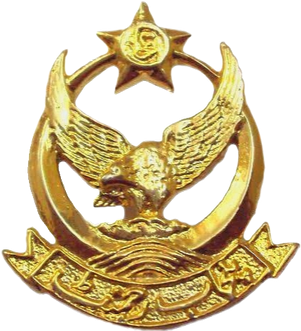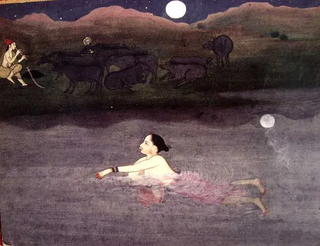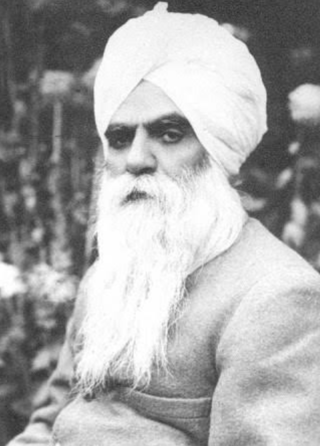This article relies largely or entirely on a single source .(May 2024) |
Phase 5(Sector 59) is a residential area of Mohali, Punjab.
This article relies largely or entirely on a single source .(May 2024) |
Phase 5(Sector 59) is a residential area of Mohali, Punjab.

Punjab, also known as the Land of the Five Rivers, is a geopolitical, cultural, and historical region in South Asia. It is located in the northwestern part of the Indian subcontinent, comprising areas of modern-day eastern-Pakistan and northwestern-India. Punjab's major cities are Lahore, Faisalabad, Rawalpindi, Gujranwala, Multan, Ludhiana, Amritsar, Sialkot, Chandigarh, Shimla, Jalandhar, Patiala, Gurugram, and Bahawalpur.

Punjab is a province of Pakistan. With a population of over 127 million, it is the most populous province in Pakistan and second most populous subnational polity in the world. Located in the central-eastern region of the country, it has the largest economy, contributing the most to national GDP, in Pakistan. Lahore is the capital and largest city. Other major cities include Faisalabad, Rawalpindi, Gujranwala and Multan.

Punjabi, sometimes spelled Panjabi, is an Indo-Aryan language native to the Punjab region of Pakistan and India. It is one of the most widely spoken native languages in the world with approximately 150 million native speakers.

The Punjabis are an Indo-Aryan ethnolinguistic group associated with the Punjab region, comprising areas of northwestern India and eastern Pakistan. They generally speak Standard Punjabi or various Punjabi dialects on both sides.
Punjab & Sind Bank is an Indian public sector bank headquartered in New Delhi. As of 31 March 2024, the bank has 1570 branches, which are widely spread across India. The largest number of branches are in the state of Punjab - 635 branches. The bank has 25 zonal offices, which are located all over India.

West Punjab was a province in the Dominion of Pakistan from 1947 to 1955. It was established from the western-half of British Punjab, following the independence of Pakistan. The province covered an area of 159,344 km sq, including much of the current Punjab province and the Islamabad Capital Territory, but excluding the former Princely state of Bahawalpur. Lahore, being the largest city and the cultural centre, served as the capital of the province. The province was composed of four divisions and was bordered by the state of Bahawalpur to the south-east, the province of Baluchistan to the south-west and Sind to the south, North-West Frontier Province to the north-west, and Azad Jammu and Kashmir to the north. It shared International border with Indian state of East Punjab to the east and Indian-administered Jammu & Kashmir to the north-east. It was dissolved and merged into West Pakistan upon creation of One Unit Scheme, in 1955.

The Punjab Regiment is an infantry regiment of the Pakistan Army. The regiment takes its name from the historic Punjab region, which is now divided into the Punjab province of Pakistan and the Indian states of Punjab, Haryana and Himachal Pradesh. It was raised in its current form in 1956, following the amalgamation of the 1st, 14th, 15th and 16th Punjab regiments that were inherited by the Dominion of Pakistan from the British Indian Army upon the Partition of India. Since then, the regiment has expanded in size to 63 battalions.

Arora is a community of Punjab and Sindh, comprising both Hindus and Sikhs. The name is derived from their ancestral place Aror, Sindh. In 712, the Arora people are said to have left Aror and started to settle in the cities of Punjab, mainly in South Punjab. However, according to W. H. McLeod, many Aroras originally came from the Pothohar area in North Punjab.

Majha is a region located in the central parts of the historical Punjab region, presently split between the republics of Pakistan and India. It extends north from the right banks of the river Beas, and reaches as far north as left bank of the river Ravi, constituting upper half of the Bari Doab.

Sukkur Division is one of the seven administrative Divisions of the Sindh Province of Pakistan. This level of administration was abolished in 2000 but restored again on 11 July 2011. CNIC code of Sukkur Division is 45.

Moga is a city in the Indian state of Punjab. It was made a part and headquarters of the Moga district on 24 November 1995, by the then Chief Minister Harcharan Singh Brar. Before becoming a district, Moga was a part of Faridkot District as a tehsil. Moga is situated on the National Highway 95. The area of Dharamkot block with 150 villages has been merged into Moga district, which falls under the jurisdiction of Ferozpur division.

Sohni Mahiwal or Suhni Mehar is a traditional Punjabi–Sindhi folk tragedy. Set in central Sindh or northern Punjab, depending upon the version of the tragedy, the folktale depicts the separation of two lovers and their tragic demise.

Vir Singh was a Sikh poet, scholar and theologist of the Sikh revival movement, playing an important part in the renewal of Punjabi literary tradition. Singh's contributions were so important and influential that he became canonized as Bhai, an honorific often given to those who could be considered a saint of the Sikh faith.
Jandiala is a village of the Jalandhar district situated in the Indian state of Punjab, in India.
Governor Ujjal Singh was an Indian politician who was a participant in the First Round Table Conference, opened officially by King George V on 12 November 1930. Ujjal Singh served as the Finance Minister of Punjab, Governor of Punjab, followed by acting Governor of Tamil Nadu. Prior to this he was one of Pre-Partition Punjab's largest landowners, owning thousands of acres in Hadali, Jaranwala, Mian Channu, Lyallpur, Montgomery, Sargodha and other areas.

Punjab is a state in northwestern India. Forming part of the larger Punjab region of the Indian subcontinent, the state is bordered by the Indian states of Himachal Pradesh to the north and northeast, Haryana to the south and southeast, and Rajasthan to the southwest; by the Indian union territories of Jammu and Kashmir to the north and Chandigarh to the east. To the west, it shares an international border with the identically named Pakistani province of Punjab, and as such is sometimes referred to as East Punjab or Indian Punjab for disambiguation purposes. The state covers an area of 50,362 square kilometres, which is 1.53% of India's total geographical area, making it the 19th-largest Indian state by area out of 28 Indian states. With over 27 million inhabitants, Punjab is the 16th-largest Indian state by population, comprising 23 districts. Punjabi, written in the Gurmukhi script, is the most widely spoken and the official language of the state. The main ethnic group are the Punjabis, with Sikhs (57.7%) and Hindus (38.5%) forming the dominant religious groups. The state capital, Chandigarh, is a union territory and also the capital of the neighbouring state of Haryana. Three tributaries of the Indus River — the Sutlej, Beas, and Ravi — flow through Punjab.

Shalwar kameez is a traditional combination dress worn by men and women in South Asia, and Central Asia.

Salwar or shalwar is cloth worn from the waist to the ankles, covering both legs separately. It is the lower-garment of the shalwar kameez suit which is widely-worn in South Asia. It is known for its lively hues, rich fabrics, and embroidery. The outfit has been a part of Punjabi tradition of India and Pakistan for centuries. It is also the national dress of Pakistan, and since the later 1960s, the salwar is being used in government offices in Pakistan. Salwar can be distinguished from the Punjabi suthan which is shorter than the salwar.

Sardara Singh Johl is an Indian agriculture economist, writer, politician and the chancellor of the Central University of Punjab. A former National Professor of Agricultural Economics of the Indian Council of Agricultural Research, he served as the vice chancellor of the Punjabi University and Punjab Agricultural University during different tenures and chaired the Commission for Agricultural Costs and Prices set up by the Government of India. He is a former director of the Central Board of Governors of the Reserve Bank of India and a former consultant to international bodies such as Food and Agriculture Organization, World Bank and United Nations Economic and Social Commission for Western Asia. The Government of India awarded him the third highest civilian honour of the Padma Bhushan, in 2004, for his contributions to Agriculture and agriculture education.

Folk practices prevalent in Punjab incorporate local mysticism and refers to the beliefs and practices strictly indigenous to the Punjabi people, of the Punjab region including ancestral worship, veneration of saints, and local festivals. There are many shrines in Punjab which represent the folk religion of the Punjab region which is a discourse between different organised religions. These shrines represent inter-communal dialogue and a distinct form of cultural practice of saint veneration.